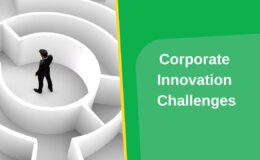- Don’t Fall For “Fail-Fast”
- What Is Fail-Fast?
- Why Fail-Fast?
- Why Did The Fail-Fast Meme Start In The Silicon Valley?
- Why Was Fail-Fast Adopted?
- The Lean Start-Up Methodology
- The Problem With Fail-Fast
- Failure And Corporate Innovation
- Fail-Fast Popularity
- Is Fail-Fast The Best Way To Innovate?
- Learn-Fast
- The Single Biggest Reason For Failure
- Field Interviews To The Rescue
- Key Takeaways
Don’t Fall For “Fail-Fast”
There’s a lot of buzz around the idea of Fail-Fast as a means to encourage innovation and minimize risk. Fail-Fast originated in the Silicon Valley entrepreneurial ecosystem dominated by technology development companies.
What Is Fail-Fast?
The basic idea behind fail-fast is that it’s better to find out early on if an idea or product is not going to work, rather than pour time and resources into something that’s destined to fail.
This philosophy has been adopted by many startups as a way to reduce risk and increase the chances of success. The most common use of Fail-Fast is to release a minimum viable product (MVP) as quickly as possible to get feedback from customers and users.
Fail-Fast was adopted as a mantra within start-up culture and has been distorted in recent years to imply that failure is a good outcome.
Why Fail-Fast?
The logic behind fail-fast is that it’s better to find out early on if something is not going to work, rather than invest a lot of time and resources into something that’s destined to fail. This way, innovators can save time and money by quickly pivoting to another idea that has a better chance of success.
Why Did The Fail-Fast Meme Start In The Silicon Valley?
Technology companies commonly use a system design methodology that employs fail-fast systems that immediately report any condition that is likely to indicate a failure. Typically, fail-fast systems are built to stop normal operations rather than to continue a potentially flawed process. The Fail-Fast methodologies were pioneered by software developers since they needed to rapidly test their ideas and get feedback from users to make sure they were developing software to perform desired functions.
The Silicon Valley technology-based start-up community adapted the fail-fast software methodology and applied it to new venture creation.
Why Was Fail-Fast Adopted?
At the time of the origination of the Fail-Fast meme, new product creation used a prolonged waterfall development method that did not consider customer needs and feedback. Companies would work for years, spend millions on building a new product, and find out that no one wanted the product after the product was launched.
Fail-Fast was a way to avoid the lengthy development times, and the associated huge sunk costs, by rapidly prototyping and testing new product ideas with potential customers. If an idea failed, it was abandoned quickly, and the team moved on to the next product iteration.
The Lean Start-Up Methodology
Fail-Fast is often associated with the Lean Startup methodology which is based on the principle of Build-Measure-Learn. The idea behind Build-Measure-Learn is that start-ups should focus on building something quickly, measuring how users respond, and then learning from that feedback to iterate and improve their product.
The Fail-Fast philosophy has been widely adopted by startups as a way to encourage experimentation, speed up product development times, and minimize risk. However, Fail-Fast can also be a recipe for disaster if not properly understood and applied.
The Fail-Fast true meaning was to encourage innovators to use customer feedback in an iterative manner to develop products that are desirable to customers.
The Problem With Fail-Fast
The Fail-Fast message has been co-opted by people who want to promote a “fail often” approach as a way to encourage risk-taking. This is a dangerous misinterpretation of the original message.
The “fail often” proponents would have you believe that the best way to achieve success is to try many different innovations and see what sticks. They believe that the best way to learn is through trial and error. This may work in some cases, but it’s an inefficient approach if you’re trying to build a sustainable business.
Trying many different things not tied to a clear strategy for customer success is expensive and time-consuming. A better approach is to focus on a few key areas that align with a company’s strategic intent, and then strive for excellence in those areas. This may not be as glamorous as the “fail often” approach, but it’s a much more effective way to build a successful business or new product.
Failure And Corporate Innovation
The profitable core business has a lot to lose and prefers to minimize the exposure to uncertainty, such as new ventures. Managers of the core business typically have a strong preference to avoid risk. Organizations that are focused on optimizing for the short term have a harder time looking beyond day-to-day operations, even when disruption is on the horizon. Innovation product or venture failures within existing companies create a conflict with the desired outcomes sought by core business managers. The failures are a proxy for risk and core businesses historically will act to eliminate the root cause of the risk, in this case the innovation. Corporate innovators that fail often risk losing support of senior core managers.
Check out our blog about failure and challenges of Corporate Innovation Challenges to learn more about the topic.
Fail-Fast Popularity
Innovation by its nature makes us vulnerable to the possibility of failure. The Fail-Fast perspective of failure is extremely popular because it’s inherently liberating to be told that, if you screw up or fall short, it doesn’t matter. The meme suggests that failure is assisting you in your future success, and the more spectacular your failure, the better.
The problem with this thinking is that it’s not based in reality. In the business world, failure is often met with negative consequences, such as the loss of funding, customers, or jobs. And while some companies are able to weather the storm of failure and come out stronger on the other side, for many others, failure is the death knell.
So why is the Fail-Fast perspective so popular? There are a few possible explanations:
1) The Allure Of Being Part Of A Counterculture.
The Fail-Fast perspective is often promoted by people who see themselves as being outside of the mainstream. They’re the rebels, the mavericks, the non-conformists. And while there’s nothing wrong with being a rebel, the problem is that this perspective often leads to a caricature of what it means to be an innovator.
2) It’s A Way To Avoid Taking Responsibility For Your Actions.
If you buy into the Fail-Fast perspective, then it’s easy to absolve yourself of any responsibility when things go wrong. After all, you were just following the philosophy, right? The problem is that this way of thinking leads to a lot of unnecessary risk-taking and can ultimately be destructive to both yourself and your business.
One way to combat avoiding responsibility is by coming up with a plan. Using a tool like Backcasting can help you take the necessary responsibility to build towards your abundant life.
3) It’s A Way To Justify Bad Decision-Making.
If you make a series of poor decisions, it’s easy to rationalize your actions by saying that you were just following the Fail-Fast philosophy. But in reality, you’re just using this perspective as a way to excuse your bad decision-making.
Is Fail-Fast The Best Way To Innovate?
In theory, a consequence-free viewpoint of failure is liberating and empowering. In practice, it’s not how great ideas are created. Constraints motivate ingenuity, and there’s no greater constraint than a requirement to do everything possible to avoid failure.
It’s our need to survive that drives innovators to keep pressing for breakthroughs, to refuse to give up, to be compelled to find the solution to a difficult problem. If failure is not an option, you’re constantly incentivized to think of new answers and to persevere.
Failure rarely offers useful lessons. New research shows learning fast, through empowered teams, clear hypotheses, and adept questioning leads to better innovation.
Failure rarely offers useful business lessons, according to Jeanne Ross and Nils Fonstad, research scientists at the MIT Center for Information System Research. In fact, they discovered that this sort of thinking frequently contributes to projects with minimal or no value for the company.
Ross and Fonstad write that “Leaders often assume that failures will lead to valuable learning. Our data doesn’t support that assumption, it is difficult to extract a reliable summary of lessons learned because most failures have multiple, interrelated causes”.
Learn-Fast
Instead of failing fast, organizations should learn fast by planning initiatives to encourage learning rather than expecting failure to provide knowledge. Employees should be encouraged to test hypotheses by asking probing questions and admitting what they don’t know. “The challenge is to be much more purposeful about what you’re doing,” Fonstad said.
Fonstad and Ross found that testing hypotheses can lead to more thoughtful actions and a better understanding of outcomes, a shift from the action-first mindset that is implied by Fail-Fast.
An advantage of learn-fast is that it can help you create income by doing side hustles. When you get good at a new task quickly, it can stabilize your financial future and help establish your abundant life today.
The Single Biggest Reason For Failure
Since January 2014, CB Insights has conducted postmortems on startup failures several times each year. They have determined that 42 percent of new ventures failed because they did not build a product that people would use or pay to use. These new products were built from on inside-out perspective and did not account for the desires of the customers. New products need to be desirable to customers, be technically feasible to build, and be financially viable. When we take an inside-out perspective of product development we do not consider customer desirability.
Field Interviews To The Rescue
How can you determine what people want before you waste time and resources? You conduct field interviews with a large number of targeted customers to learn how they address the problem stack you have identified. This field interview feedback is then used to design a product that meets the needs of the customer.
The process of determining what a buyer wants is known as consumer discovery. By doing customer discovery, you minimize your risk of failing because you built a product the customers want.
Field interviews combined with Learn-Fast methodologies are more productive in developing innovative products than the Fail-Fast methodology.
Key Takeaways
- The fail-Fast methodology is an inefficient innovation methodology.
- Learn-Fast is a better way to innovate.
- Failing isn’t an option in all circumstances.
- Customer discovery should be used to minimize the risk of failure.





